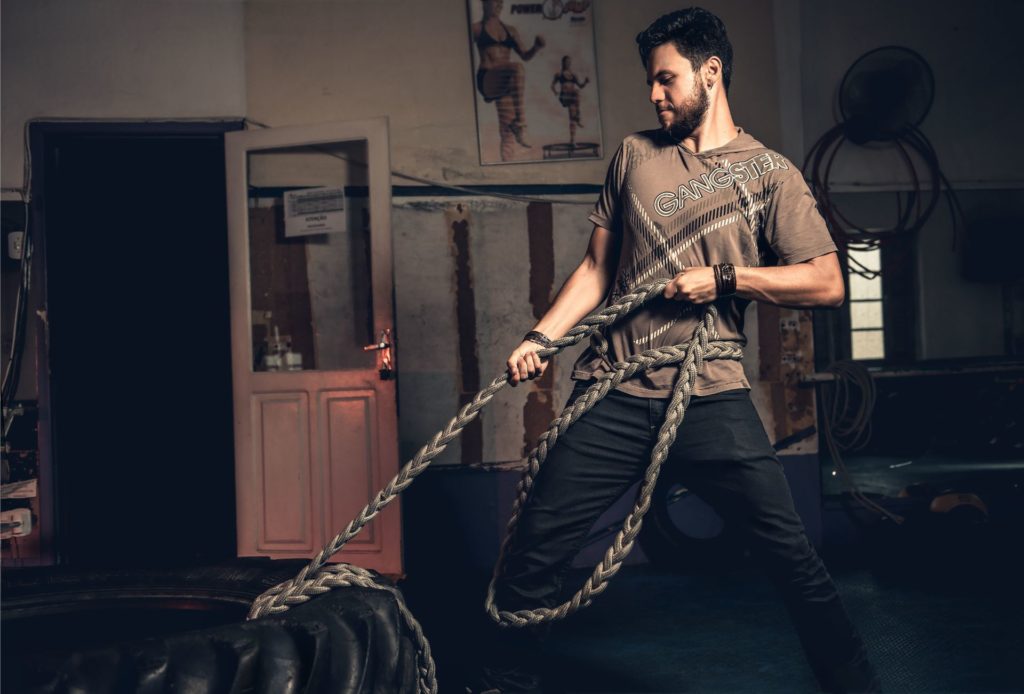
If you are new to exercise, are consistent, work with appropriate intensity, and do enough, you will begin to see results immediately. The first few months of exercise are golden, and gains happen so fast it’s easy to continue. Its when things slow down that we question our commitment to our fitness.
People are often unsure about their expectations in regards to exercise. In order to understand what kind of result we are going to get, we have to differentiate between individuals. Someone new to exercise is going to see results much faster than someone who has been exercising for a long time. The more fit and trained a person becomes, the more complex their training must become to continue to progress.
People are often far too inconsistent with their fitness and health. They exercise for brief periods of time, diet hardcore for a few months, and fall off the wagon. This inconsistency leaves people out of shape more often than not. How can you maximize your fitness results? How can you make sure your hard earned gains stay with you? The truth is simple, but that doesn’t make it easy.
Fitness as a lifestyle

The reality is fitness needs to be incorporated into how you live. You should be consistent with your exercise and activity always, and be comfortable with the process, not the result. Making a goal is really important, and hitting goals can be addicting, but if your only motivation is a short term goal, you can be sure you will see-saw with your results.
Specific diets work, and many people have found numerous ways to lose weight in a short term scenario, but they are mostly unsustainable. Having a well-balanced diet with appropriate exercise volume can allow you flexibility in your diet.
If a person was to exercise regularly and eat 80% clean with proper portions, but include snacks and cheats when they really wanted it, they would be able to look good and maintain a healthy physique. Its when there are extenuating circumstances that a specific diet might be warranted, and this should be under the advisement of a doctor or nutritionist.
Finding exercises you enjoy

It is difficult to remain consistent with exercise if you dread going to the gym or working out. People who are naturally motivated to exercise usually have a performance goal they are trying to meet, such as an athlete. When you can be better at something you love, you do what it takes.
For people who aren’t training for anything specific, motivation might be difficult. Aesthetic motivation can be powerful, but this alone is often not enough to truly inspire someone to take exercise seriously and incorporate it into their lifestyle.
For people who are simply trying to lead a healthy life so they can be active and mobile for a long time, it’s important to find that form of exercise that is sustainable for you. There are so many different kinds of exercises, classes, disciplines, and sports that someone can enjoy casually enough to stick with it.
Finding exercises that are fun and engaging is a powerful tool. Incorporating your favorite music, or rewarding yourself post exercise is a really good way to stay motivated. Switching up how your exercising can also be inspiring, and having an exercise program that is well thought out can give you something to look forward to.
Pushing yourself and avoiding injury

Intensity is relative, but the same for everyone. There’s a degree of discomfort when exercising that’s pretty much unavoidable. Often people are scared and intimidated by exercise and don’t know how hard to push themselves. A 300lb strength athlete is going to have no problem performing exercises with weights that a 110 lb woman might not ever be able to move.
The reality is your parameters for exercise will determine your results. You can choose different ways to perform an exercise but you should always be working hard. If you are aiming for 10 repetitions of a particular exercise, this shouldn’t be arbitrary. If you aim for 10, you should be genuinely fatigued at 10. If someone puts a gun to your head and you can push out another 10 reps, that weight was not appropriate. It just won’t be enough to progress.
People who have had injuries or pain conditions tend to approach intensity with apprehension. Working hard doesn’t increase your injury risk, performing exercises incorrectly does. Knowing how to perform an exercise properly should determine how hard you should be working. You should be choosing a weight that is appropriate to reach fatigue in a determined range, but not too heavy that your form breaks down. This is key.
If you just had a knee injury or leg injury and you are getting back into exercise, you should be working hard with regard to certain restrictions. Relatively speaking, you might be fatigued faster by less weight, and limited in exercises you can safely do, but you should still be working with appropriate intensity. The same rules apply, you need to be fatigued within the parameters you choose.
If you are performing bicep curls, for instance, and you are aiming for 10 repetitions, if 5 lbs
Stages of progression:

Beginning 4-8 weeks
In the beginning stages of exercise, nearly anything you are going to do is going to have fast results and benefits. The first 4 – 8 weeks of exercise is a golden period. It’s important to have some strategy, however, to avoid developing muscle imbalances and other conditions, or possibly injuring yourself.
Many times someone’s goal is ambitious, and it’s easy to try and jump into something extreme in the beginning. Whether you want to become a strength athlete, an agility/endurance athlete, or just general fitness, it’s a good idea to have a progression to your programming to avoid plateaus and maintain motivation.
In the first few months of exercise, or periodically as a strategic
Intermediate 1-2 years
After a few months of exercise your progress will begin to decline. This is a normal response to your body adapting to the stress of exercise. People might become discouraged or think they are doing something wrong and that isn’t necessarily the case.
A good program will account for this decline of progress and keep you motivated by providing a path to continue. At the intermediate stages of exercises, resistance training becomes more challenging and strength and muscle gains can further develop past that of a beginner.
The intermediate phase can last up to 2 years and during this time many people discover what they enjoy most about exercise and their goals evolve. Many people with general fitness aspirations will be perfectly content at this stage and decide to maintain and create a sustainable lifestyle.
Advanced 2+ years
This is a stage of exercise that is mostly unnecessary for someone with a general fitness/wellbeing goal. After a year or two of exercise, you might want more. You might want to aim for an event or race, or a strength competition like powerlifting meet or amateur strongman. Someone in the advanced stage of fitness might have higher than average aesthetic goals and might want to compete in a bodybuilding or physique show.
It’s at the advanced stage of fitness that programming is key, and must become methodical and specific. A strength athlete might need to work hard and consistently for months just to add 10lbs to a lift. A physique athlete might spend a whole year training hard just to put on 10lbs of muscle.
Being able to sustain the lifestyle of an advanced fitness individual is difficult, and takes tremendous internal motivation. Its when we reach this level and attempt to progress that we really appreciate the hard work some people put into their fitness and exercise goals.



